Hello to all….
….Updated to correct WinLink HF frequencies. Remainder Below is unchanged….
The Massachusetts Statewide Hurricane Exercise Participants Manual is now available. The Controller’s document will be sent to Massachusetts RACES/ARES/SKYWARN MARS leadership and net controls the leadership designates. If you are a net control or an organizational leader that does not reside in Region Two and need the controller’s document, you may contact me or any ARES/RACES/SKYWARN leadersip for that controller’s document.
Special thanks to Mike Neilsen-W1MPN for his support in adding key material to the documentation including the charts in the Word Document, Rules of Play and some of the objectives for the exercise.
If you do not have access to Word, the text of the document is listed in the extended text of this web site posting. The Charts in the Appendix cannot be made available by any other means besides Microsoft Word but are not required material for the exericse. The Word Document is available via the link below.
Hurricane Joshua Exercise Participants Manual
Inevitably, there may be some typos or corrections needed to the document. If needed, updates will be posted via the web site.
Below is the text of the Word Document for those that cannot view Word documents:
Date and Timeframe of Exercise
Monday June 4th, 2007
Start Time 7 PM
End Time: 9 PM
Duration: 2 Hours
-Please allow time for setup/take down of any equipment during this exercise and the potential that the exercise goes longer than planned. EMA Directors and those controlling the exercise will ultimately determine the length of the exercise.
Purpose and Scenario
To exercise communication networks during the response phase of a severe storm scenario in the face of significant infrastructure damage to landline and cellular telephone, and loss of commercial power. EMA’s should strive to report damage assessments to state and federal authorities before and simultaneously with resource requests. EMA Managers are also encouraged to practice simulated recovery operations at their discretion as a training opportunity.
Eastern and Western Massachusetts ARES will participate in the Hurricane Joshua RACES Exercise for Monday June 4th from 7-9 PM. The purpose of this drill will be the following:
• Local RACES and ARES team coordination and deployment as well as local NTS and tactical message handling.
• Amateur Radio players are encouraged to use digital communications as the primary method. Use resource voice frequencies for coordination and information sharing (Highly recommended).
• EMA’s without embedded amateur radio operators can request actual amateur radio support ahead of exercise by contacting Rob Macedo at kd1cy@ema.arrl.org for Eastern Massachusetts cities and towns and can contact John Ruggerio at n2yhk@wpi.edu for Western Massachusetts cities and towns.
• EMA’s without embedded amateur radio operators can also request simulated amateur radio support during the exercise.
• Amateur radio operators should communicate with MARS nodes where possible.
• Intra district and interdistrict tactical and formal message handling.
• Utilization of HF, VHF, UHF, Packet, WinLink IRLP and Echolink modes of communication.
• Utilization of EOC or Simulated EOC’s at various points across the section and interfacing with other EOC’s, Simulated EOC’s and SKYWARN liaisons in other sections where appropriate.
• Local SKYWARN Net activations for passing of data to NWS Taunton.
• Utilization of the integrated conference server, which is the Echolink *NEW-ENG* conference node and IRLP Reflector 9123 as a command net for communications with WX1BOX-NWS Taunton.
For this exercise, it is expected that all EC’s, SKYWARN Liaisons or their designee to support this drill and what is to be exercised. As always, at the local level, message handling and formation is critical and keeping Hams at the local level busy must occur. Be creative and at the same time be realistic. The drill scenario will follow the envelopes that RACES will be following in Region II. For those that are not directly involved with a city/town in Region II RACES, the drill scenario will follow messages that have been used in past drills and have been made to follow the Region II RACES envelopes. Net Controls involved in the Region II RACES Nets are asked to read off enough of the envelopes to inform ARES/SKYWARN Amateurs and general Amateurs of the scenario and timeline. Net Controls involved in any net that is not the Region II RACES Nets are asked to read the messages that are to guide the scenario over their net frequency. Net participants are asked to respond with information based on the messages and how the hurricane is evolving as the message will guide us through the exercise.
Amateurs are asked to then build tactical messages, particularly SKYWARN messages as well as NTS traffic messages for the exercise. For this drill, the Eastern Massachusetts ARES SEC will be located at the National Weather Service in Taunton Massachusetts (WX1BOX) and he will be on the air running the command net to be held on VoIP and as needed he will assist with drill direction for teams within the section and for inter-section communications as needed and “oversee” the exercise as much as possible.
Rules of Play
• Use battery/emergency power wherever possible during the exercise so you can see if those systems work (or don’t) before an actual emergency.
• In order to experience significant play in a very short time, please focus on message response to your local issues, and reporting damage.
• Use messages put out by the net control stations and exercise controllers to stay informed of exercise progression. Incoming information messages about the scenario are to cue responses from your area on damage and problems from the hurricane.
• If you should fall behind, always work on the most current (real world time) events first. Catch up on un-played events when you can.
• Please report your local damage status even if you don’t have specific resource needs. Current information is always needed at the state and federal levels to guide their response.
• Consider delegating damage reporting to amateur radio personnel such as the SKYWARN teams where available. Please refer to SKYWARN frequencies listed here in your exercise package if you don’t have amateur radio operators embedded.
• Consider delegating communication duties on state frequencies to embedded amateur radio personnel.
• Amateur radio operators should have radios ready to communicate on simplex frequencies at a moment’s notice. Repeater outages may occur randomly as prompted by the exercise controllers/net control stations.
• Amateur radio operators should always start with the regional SKYWARN or RACES repeater and activate your (prearranged and pre-published) network(s) from there.
If you, as a participant, are having trouble generating tactical/formal message traffic on damage reports, one way to generate data can be to have each color house in your neighborhood be associated with a certain amount of damage. This type of ideology is done in Damage Assessment exercises. Here is an example that could be utilized as required:
White Houses: Totally destroyed
Blue Houses: Roofs are torn off
Red houses: Minor roof damage
Brown houses: Minor damage to roof shingles and siding
The same could be done for tree damage:
Trees near white houses: Trees totally uprooted in the area.
Trees near blue houses: Numerous large trees down only a few untouched.
Trees near red houses: Several trees down but larger tress undamaged.
Trees near Brown houses: 1-3 large trees down in the area.
With these damage examples, you can also create reports of trees down on to houses causing damage as well. SKYWARN Spotters/Amateurs who are mobile during or prior to the exercise could map out these types of reports in various cities and towns and relay those reports at the appropriate time in the exercise.
Exercise Objectives
The objectives of this exercise are as follows:
• Have all teams have one liaison that monitors their local RACES Repeater in addition to their local operations.
• ARES teams willing to deploy away teams are asked to do so where possible provided benign weather conditions on the drill date.
• Establish district wide communication utilizing the following modes:
o IRLP and/or Echolink nodes.
o Utilizing the integrated Echolink *NEW-ENG* Conference Node (Node #9123) and IRLP reflector 9123 as a command net for contact with NWS Taunton (WX1BOX)
o HF
o Utilizing Various 2 Meter Repeaters that the ARES teams will be utilizing in the area when necessary.
o Utilizing SKYWARN frequencies to give mock tactical reports that meet SKYWARN criteria.
o Monitoring RACES Nets active during the exercise and communicate with RACES stations when/if needed. In Region II, discretion is requested given the different format that will be utilized in that area versus the rest of the state.
o Establish a digital means of contact via Packet or WinLink between areas for those that have WinLink and/or Packet capability.
• Establish contact with other ARES districts and EOC’s via HF (3943 and/or 7245 KHz).
• Test and evaluate the range of Home stations for relay operations.
• Having mobile “roving” Amateurs wherever possible.
• Practice sending many test NTS messages for requests for assistance and status reports to ARES leadership and for RACES stations to send requests for assistance and status reports to their Region I, II or III Managers.
• Practice sending many test tactical messages to ARES/RACES leadership.
• Practice sending many test tactical SKYWARN messages to NWS Taunton.
• Practice sending out of bulletins and statements from NWS Taunton to the various ARES teams.
• Practice sending traffic between ARES members within an ARES team.
• Practice sending traffic between EOC’s within an ARRL Setion.
• Practice sending traffic to the Western Massachusetts section ARES/RACES/SKYWARN personnel where appropriate.
• Assure MARS Liaisons have a way to gather SKYWARN and ARES reports to formulate into EEI’s (Essential Elements of Information).
Operational Ground Rules
The following are some operational ground rules for this exercise:
• All communications options should be utilized. Exercise controllers may throw in “failures” to test out “failover” of communications wherever possible as long as they are properly communicated up and down the ARES leadership.
• Many messages of both a tactical and NTS formal nature should be sent within the teams participating, between teams and between districts wherever possible.
• Frequent usage of the phrase “This is a Drill” should be incorporated with any messages, traffic or announcements relating to the drill.
Operational Players List
The following is a list of agencies and a general list of EOC’s that will be playing in the exercise.
National Weather Service in Taunton Massachusetts (WX1BOX)
The National Weather Service in Taunton Massachusetts will be active on the Echolink *NEW-ENG* (Node #: 9123) and IRLP Reflector 9123 systems as well as roving local repeaters to pick up crticial mock reports of weather and damage reports. We will also attempt to monitor HF and 6 Meters given the current limitations with the radio system setup at NWS Taunton.
Numerous EOC’s in MEMA Region II and Other MEMA Regions Across Massachusetts
There will be numerous EOC’s concentrated in Region II but also scattered about in other MEMA regions that will be active during the exercise. They will be active on their RACES frequencies and will be encouraged to be active on their SKYWARN Repeaters, HF and VoIP using the EchoLink *NEW-ENG* conference node #9123 and IRLP Reflector 9123 utilizing links on Echolink and IRLP and using individual PC’s that can utilize the Echolink program.
Salvation Army Team Emergency Response Network (SATERN)
The Salvation Army Team Emergency Response Network or SATERN will most likely participate in the exercise similar to what has been done in past hurricane exercises. They will monitor HF, VoIP and their local Boston area repeaters as required to communicate with ARES/RACES/MARS personnel.
American Red Cross of Massachusetts Bay
The American Red Cross of Massachusetts Bay will be participating in the exercise from their headquarters in Cambridge seeking to communicate with their 5 regional offices and to communicate with MEMA Regions and the National Weather Service as part of the exercise.
MARS Stations
MARS stations are encouraged to play along with the exercise to assist with ARES/RACES/SKYWARN support and to utilize information presented in the exercise for the formation of Essential Elements of Information or EEI’s where possible.
Home Stations
We encourage home stations across Massachusetts to monitor and check into nets across the region for ARES and SKYWARN assistance. Some home stations can act as “simulated EOC’s” or net controls where appropriate. We encourage stations to generate tactical message traffic for SKYWARN and formal message traffic for ARES where possible.
Mobile Stations
Mobile stations are encouraged to participate utilizing all modes at their disposal and can be utilized as roving stations and can report conditions that they might see if a real hurricane is occurring from their mobile station. We encourage stations to generate tactical message traffic for SKYWARN and formal message traffic for ARES where possible.
Amateur Radio Frequency Plan
The frequency plan will utilize existing SKYWARN and RACES repeaters that are well documented via the web. The following links detail these frequencies:
SKYWARN Frequencies:
http://www.wx1box.org/mod.php?mod=userpage&menu=10&page_id=3
RACES/Simplex Frequencies:
http://ares.ema.arrl.org/mod.php?mod=userpage&menu=1804&page_id=9
Please note that SKYWARN Frequencies are more up to date on the first link.
It is noted that IRLP and Echolink nodes maybe connected either to the *NEW-ENG* Conference node or IRLP Reflector 9123. This will again serve as a command net for the the National Weather Service in Taunton Massachusetts, WX1BOX, to facilitate contact with ARES-SKYWARN liaisons, MARS Liaisons, and city/town EOC’s who have the capability to liaison via this system. Individual Hams and Spotters are welcome to listen and if they have no other means to pass their information, they can pass it over this system but are otherwise asked to use their local SKYWARN, RACES and ARES repeaters to pass their traffic and allow the liaisons to pass the information to NWS Taunton, Massachusetts. In addition, NWS Taunton will be roving the various local repeaters to pick up information per the normal SKYWARN Activation process along with monitoring the command net. We will also attempt to have a station monitor both 6 Meters and HF simultaneously.
It is also noted that some SKYWARN, RACES and ARES frequencies overlap with one another. Past exercises have proven that there have been no issues with such overlap. This exercise will test that theory once again and will require net controls and ARES/RACES/SKYWARN management to manage their repeater and frequency resources:
The following additional frequencies may be utilized during the drill in the Southeast Massachusetts district:
SEMARA ARES Response Team Frequency:
147.000-Dartmouth Repeater
Fall River (BCRA) ARES/RACES Team Frequency:
145.15-Fall River Repeater PL: 123.0 Hz.
The MMRA Repeater System will be linked up for the two-hour period of the drill and we will attempt to have a Net Control monitoring the system full-time and facilitate traffic at a section level for Eastern Massachusetts. Below is the link for the frequencies that can be linked up utilizing the MMRA System:
http://www.mmra.org
The following are important regional frequencies via HF for this drill:
Regional ARES/RACES Net Primary for this drill:
3943 KHz LSB
Regional ARES/RACES Net Secondary for this drill:
7245 KHz LSB
The following are important Packet Frequencies on VHF/UHF and HF for this drill:
WinLink Frequencies:
145.75: Main WinLink Frequency for Mass. State EOC and MEMA Region I
3.590 USB: Main HF WinLink Frequency for Mass. State EOC and MEMA
Region One. Region One setup currently down due to interference issues.
Packet Frequencies:
145.01: Packet Frequency supporting MEMA Regions and State EOC
145.09: BBS infrastructure supporting MEMA and NWS main Packet Freq.
Regional Simplex Frequency:
Near the end of the exercise, we will ask stations to go to 147.42 Simplex and run a roundtable of stations to determine the range of specific served agencies utilizing simplex. This will be instructed towards the end of the exercise.
There are additional local frequencies that maybe utilized in this drill at your local town/city level or at a regional level. Please contact your ARES DEC or EC for further information on additional frequencies that maybe utilized in your specific area during the drill.
1 1
 Richard J. Cabral, W1RJC writes on SEMARA list:
Richard J. Cabral, W1RJC writes on SEMARA list:

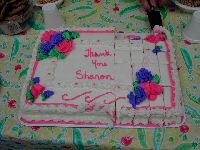
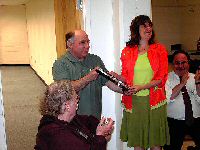
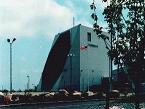 A June 6, 2007 posting of a letter from ARRL Regulatory Information Specialist Dan Henderson, N1ND concerning recommendations to owners of repeaters allegedly causing interference to military radars in California and Massachusetts has stirred up considerable discussion on the eHam.net web site.
A June 6, 2007 posting of a letter from ARRL Regulatory Information Specialist Dan Henderson, N1ND concerning recommendations to owners of repeaters allegedly causing interference to military radars in California and Massachusetts has stirred up considerable discussion on the eHam.net web site. 

 The City of Gloucester has renewed the lease for the the
The City of Gloucester has renewed the lease for the the  The
The  The Massachusetts Emergency Management Agency has added several ICS Classes to its training calendar. [
The Massachusetts Emergency Management Agency has added several ICS Classes to its training calendar. [ North Shore SKYWARN activated as a powerful Supercell downed large trees in numerous communities and prompted two Tornado Warnings along with Severe Thunderstorm Warnings for Essex County, Massachusetts on the evening of Saturday, June 2, 2007. [
North Shore SKYWARN activated as a powerful Supercell downed large trees in numerous communities and prompted two Tornado Warnings along with Severe Thunderstorm Warnings for Essex County, Massachusetts on the evening of Saturday, June 2, 2007. [ Roland Daignault, N1JOY writes on BCRA list:
Roland Daignault, N1JOY writes on BCRA list: Nantucket Island amateurs plan to provide communications and coordination for the 27th annual Iron Teams Relay on Sunday, June 3, 2007 to benefit the Big Brothers Big Sisters of Nantucket.
Nantucket Island amateurs plan to provide communications and coordination for the 27th annual Iron Teams Relay on Sunday, June 3, 2007 to benefit the Big Brothers Big Sisters of Nantucket. 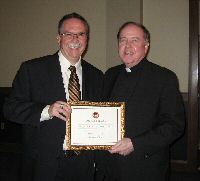
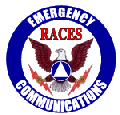
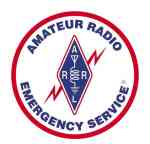

 The 5/21/07
The 5/21/07 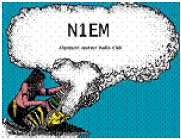 The
The